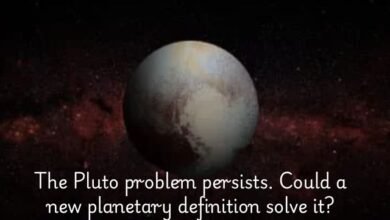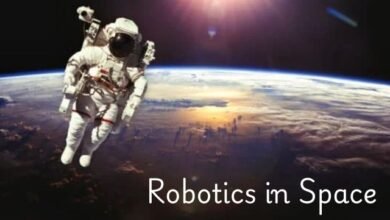Doughnut-Shaped Solar System? Scientists Rethink Early Solar System Formation
Our solar system started as a donut? New research challenges formation theories!
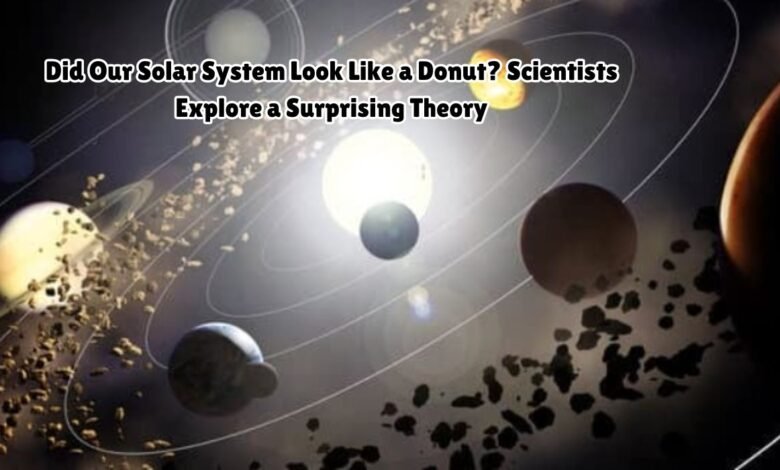
Recent research has brought to light intriguing new findings about the early formation of our solar system, suggesting it may have had a doughnut shape. This hypothesis challenges the traditional models that have long depicted the nascent solar system as a more uniform, disk-like structure. Understanding the initial configuration of our solar system is crucial, as it provides insights into the processes that led to the formation of planets and other celestial bodies.
The concept of a doughnut shape in the early solar system stems from observations and simulations that indicate a more complex and varied early environment. These findings propose that the distribution of material in the protoplanetary disk was not as smooth and homogeneous as previously thought. Instead, it was marked by regions of varying density and composition, contributing to the doughnut-like structure.
Such a configuration could have significant implications for our understanding of planetary formation and migration. If the early solar system indeed resembled a doughnut, the gravitational interactions and accretion processes that led to the development of planets like Earth would need to be reconsidered. This new perspective opens the door to revisiting existing theories and potentially reshaping our understanding of other planetary systems in the universe.
By exploring the early solar system’s doughnut shape, researchers aim to uncover more about the complex dynamics that governed the birth of our celestial neighborhood. This approach not only enhances our knowledge of our own solar system but also aids in the broader quest to comprehend the formation of planetary systems elsewhere. As we delve deeper into this fascinating topic, the implications of these findings could redefine many aspects of astronomy and planetary science.
Historical Perspectives on Solar System Formation
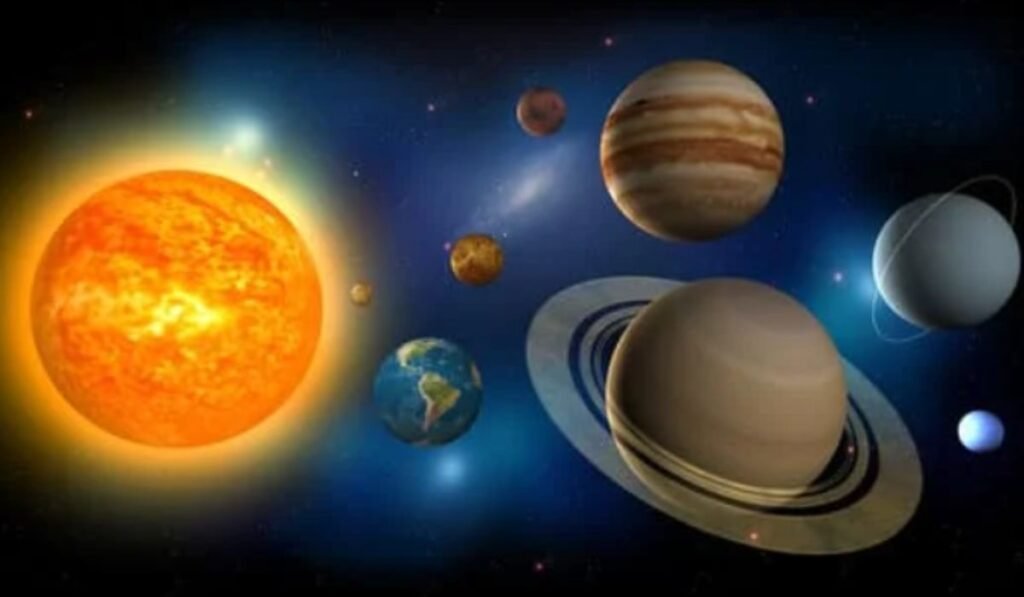
The study of the solar system’s formation has been a subject of fascination and scientific inquiry for centuries. Traditional theories have evolved significantly over time, with early models laying the groundwork for contemporary understanding. One of the most influential theories is the nebular hypothesis, first proposed in the 18th century by Immanuel Kant and Pierre-Simon Laplace. This hypothesis posits that the solar system formed from a large cloud of gas and dust, known as a solar nebula, which gradually collapsed under its own gravity to form the Sun and surrounding planets.
Over time, advancements in technology and astronomical observations have led to refinements and challenges to the nebular hypothesis. Key milestones in the history of solar system research include:
- 18th Century: Kant and Laplace propose the nebular hypothesis, suggesting a rotating cloud of gas and dust collapsed to form the solar system.
- Early 20th Century: The discovery of planetary motion and improved telescopic technology lead to more detailed studies of planetary formation.
- Mid-20th Century: The advent of computer simulations allows scientists to model the dynamics of collapsing nebulae and the formation of planetary bodies.
- Late 20th Century: The discovery of exoplanets supports the idea that planetary formation is a common process in the universe, further validating the nebular hypothesis.
- 21st Century: Advanced space missions and telescopic observations provide unprecedented data, revealing complex details about the early solar system’s structure and composition.
These milestones reflect a growing body of evidence that supports and refines the nebular hypothesis. However, new research continually challenges and enhances our understanding, suggesting that the early solar system may have had more complex shapes and structures than previously thought. The recent proposal of a “doughnut-shaped” early solar system represents the latest evolution in this ongoing scientific journey, offering new perspectives and insights into the origins of our celestial neighborhood.
The Doughnut Shape Hypothesis
The doughnut shape hypothesis posits that, in its formative years, our solar system may have resembled a torus or doughnut rather than the flat, disk-shaped model traditionally accepted in astronomy. This intriguing hypothesis challenges conventional thinking and suggests a more complex arrangement of matter around the young Sun.
In a doughnut-shaped system, the distribution of gas and dust forms a ring-like structure with a central hole, much like a doughnut. This configuration stands in stark contrast to the widely accepted protoplanetary disk model, where material spreads out in a flat, circular disk around the star. The doughnut shape implies a three-dimensional distribution of matter, which could influence the formation and evolution of celestial bodies in unique ways.
One key feature of a doughnut-shaped system is the potential for varied gravitational interactions. The central hole in the torus would create distinct regions where material could clump together differently than in a flat disk. This might lead to the formation of planets and other objects in less predictable orbits, potentially explaining irregularities observed in our solar system today. Additionally, such a structure could offer insights into the distribution of angular momentum and the dynamics of early planetary growth.
This hypothesis also suggests that the density of matter within the doughnut could vary significantly, leading to regions of higher and lower concentrations of material. These variations could impact the thermal and chemical processes happening during the solar system’s infancy, influencing the types and compositions of the resulting celestial bodies.
While the doughnut shape hypothesis is still under exploration, it opens new avenues for understanding the complexities of our solar system’s early formation. By reconsidering the structure of the primordial solar nebula, researchers can re-evaluate existing theories and potentially uncover new mechanisms behind the birth and evolution of planets, moons, and other orbital bodies.
Supporting Evidence for the Doughnut Shape
Recent advancements in astronomical research have provided compelling evidence supporting the hypothesis that our solar system’s early configuration resembled a doughnut shape. This emerging theory is backed by a convergence of data from various sources, including telescopes, space probes, and sophisticated computer simulations. Below, we outline some of the key pieces of evidence that have contributed to this novel understanding of our solar system’s formative years:
1. Observations from Telescopes: High-resolution images captured by the Atacama Large Millimeter/submillimeter Array (ALMA) in Chile have revealed doughnut-shaped dust and gas rings around young stars in other parts of the galaxy. These observations offer a glimpse into the possible initial conditions of our own solar system.
2. Data from Space Probes: NASA’s Stardust mission, which collected samples from the comet Wild 2, found particles that suggest a turbulent and dynamic early solar system. The distribution and composition of these particles align well with a doughnut-shaped formation model.
3. Computer Simulations: Advanced computer models have simulated the gravitational interactions and material distribution in a young solar system. These simulations indicate that a toroidal, or doughnut-like, shape is a plausible configuration that could explain the observed distribution of mass and angular momentum.
4. Recent Research Studies: A study published in the journal Nature Astronomy utilized data from the European Space Agency’s Gaia mission to map the positions and velocities of stars in our galaxy. The findings suggest that our solar system’s early material likely had a doughnut shape, influencing the current orbital paths of planets and other celestial bodies.
These combined observations and studies provide a robust framework supporting the doughnut shape hypothesis. As research continues to evolve, the scientific community gains a deeper understanding of the complex processes that governed the formation and evolution of our solar system.
Implications for Planet Formation
The recent hypothesis of a doughnut-shaped solar system during its formative years offers a revolutionary perspective on planet formation. Traditionally, the solar nebula theory posited that planets form within a flat, disc-shaped cloud of gas and dust. However, the doughnut shape, or toroidal structure, suggests a more complex and dynamic environment. This alternative configuration could significantly impact the initial accretion and subsequent development of planetary bodies.
In a doughnut-shaped solar nebula, the distribution of material would be more uneven and potentially more turbulent. This irregular distribution could result in varied planetary configurations, as regions of higher density might lead to the formation of larger planetary cores more quickly. Conversely, less dense areas might delay or even prevent planet formation, leading to a more heterogeneous arrangement of planets within the solar system.
One of the most intriguing implications of a toroidal solar nebula is the potential difference in the migration patterns of forming planets. In a more turbulent environment, young planets might experience more frequent and erratic migrations, influencing their final orbits and characteristics. This could help explain some of the anomalies observed in the positions and compositions of planets in our solar system.
The doughnut shape hypothesis also raises questions about the formation of Earth and its neighboring planets. If our solar system’s early structure was indeed toroidal, it might have influenced the specific conditions under which Earth formed, including its distance from the Sun and its eventual habitability. The presence of gas giants like Jupiter and Saturn could also be better understood through this model, as their rapid formation and migration could be a direct result of the more dynamic environment.
Overall, the hypothesis of a doughnut-shaped early solar system challenges traditional views and opens new avenues for research. By reconsidering the initial conditions and processes of planet formation, scientists can gain deeper insights into the origins and characteristics of our cosmic neighborhood.
Challenges and Criticisms
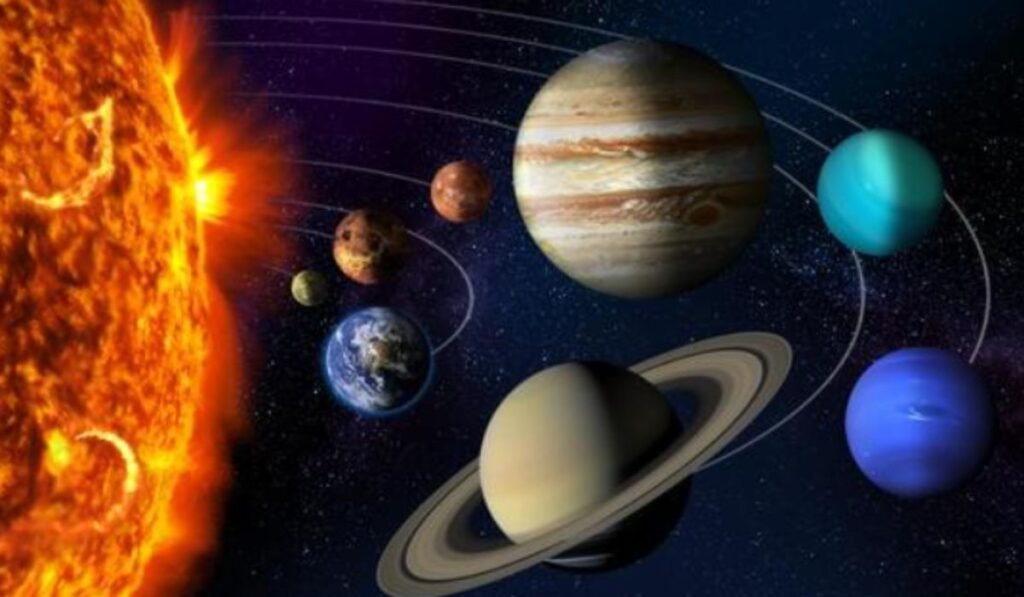
The doughnut shape hypothesis of our solar system’s early days has sparked considerable debate within the scientific community. While it offers a novel perspective on the formation of celestial bodies, it is not without its critics. Below are some of the primary challenges and criticisms faced by this hypothesis:
1. Lack of Direct Evidence: One of the foremost criticisms is the absence of direct observational evidence. Much of the support for the doughnut shape hypothesis is derived from computer models and simulations, which, while valuable, do not replace empirical data.
2. Alternative Theories: Traditional theories, such as the solar nebula hypothesis, have long provided a robust framework for understanding solar system formation. These established models are supported by extensive observational and experimental data, making it difficult for new hypotheses to gain traction.
3. Inconsistencies in Simulations: Critics argue that simulations supporting the doughnut shape hypothesis often yield inconsistent results. Variations in initial conditions, parameters, and assumptions can lead to vastly different outcomes, casting doubt on the reliability of these models.
4. Limited Scope: The hypothesis may not adequately explain certain features of the solar system, such as the distribution of angular momentum or the formation of specific planetary bodies. This limitation necessitates a more comprehensive approach to validate the theory.
5. Need for Further Research: There remains a significant gap in the current research, particularly in terms of observational data that can corroborate the hypothesis. Future studies must focus on gathering empirical evidence and refining simulations to address these gaps.
Doughnut shape hypothesis presents an intriguing alternative to traditional models, it faces several substantial challenges. Addressing these criticisms through rigorous research and empirical validation will be crucial for its acceptance within the scientific community.
Future Research Directions
Future research in the quest to validate the doughnut shape hypothesis of our solar system’s early days will be multifaceted, leveraging both ground-based and space-based resources. To confirm or refute this hypothesis, scientists will need to engage in a series of targeted investigations and technological advancements. Key areas for future research include:
- Advanced Computational Models: Enhancing computational simulations to incorporate more variables and higher resolutions can help scientists better understand the dynamics of a doughnut-shaped early solar system. These models need to integrate data from various sources to recreate the conditions that could lead to such a formation.
- High-Resolution Observations: Utilizing next-generation telescopes, such as the James Webb Space Telescope, to gather high-resolution images of distant, young star systems. Observations of protoplanetary disks in these systems could provide analogous evidence supporting the doughnut shape theory.
- Sample Return Missions: Missions like NASA’s OSIRIS-REx, which aim to return samples from asteroids, could offer direct physical evidence of the materials and conditions present in the early solar system. Analyzing these samples will be crucial in understanding the compositional diversity and formation mechanisms.
- Interdisciplinary Collaborations: Encouraging collaborations between astronomers, geologists, and computational scientists to integrate various perspectives and methodologies. These interdisciplinary efforts can lead to more comprehensive models and innovative research approaches.
- Longitudinal Studies: Conducting extended observations of the solar system and its outer regions can reveal gradual changes and patterns that align with the doughnut shape hypothesis. This longitudinal data can offer insights into the evolution of the system over billions of years.
By pursuing these research directions, scientists can gather the necessary data to either substantiate or challenge the doughnut shape hypothesis. Each of these strategies offers a unique lens through which to view the complex history of our solar system’s formation, paving the way for groundbreaking discoveries in planetary science.
- NASA Has Given a 1 Billion Dollar Deal to SpaceX: SpaceX to Deorbit the ISS Despite Options
- NASA Halts Starliner’s Return for Comprehensive Propulsion Data Review: ‘We Are Letting the Data Drive Our Decision’
- Journey Beyond: The Unfolding Drama of SpaceX Starship Return
Conclusion: A New Perspective on Our Solar System’s Early Days
The recent hypothesis suggesting that our solar system’s early days were characterized by a doughnut shape offers a transformative perspective on the formation and evolution of planetary bodies. This novel theory diverges from the traditional models that depict a more uniform distribution of matter in the protoplanetary disk. The doughnut shape hypothesis implies a differentiated distribution of materials, potentially explaining some of the unique features observed in our solar system today.
By considering a non-uniform, doughnut-shaped protoplanetary disk, we can better understand the varied composition and formation timelines of different celestial objects. This model might elucidate why certain planets and moons exhibit distinct characteristics and why some regions of the solar system are more densely populated with asteroids and other small bodies. The implications of this hypothesis are vast, offering fresh insights into the dynamics of early planetary formation and the subsequent development of the solar system.
As new research continues to emerge, the doughnut shape hypothesis could significantly alter our understanding of the solar system’s formative years. It encourages scientists to re-evaluate existing theories and consider new models that account for these recent findings. This evolving perspective underscores the importance of ongoing exploration and study in the field of planetary science.
In light of these developments, it is crucial for both the scientific community and the public to stay informed about future discoveries. The dynamic nature of space research promises to unveil more secrets about our solar system and its origins. By remaining engaged with current studies and theories, we can appreciate the complexity and wonder of the cosmos, continually refining our knowledge of the universe we inhabit.

